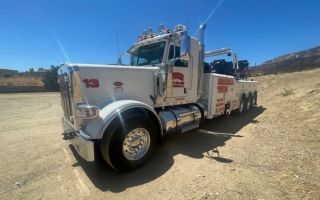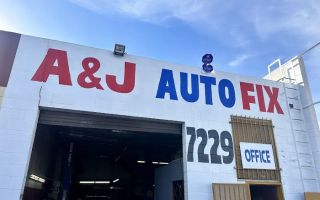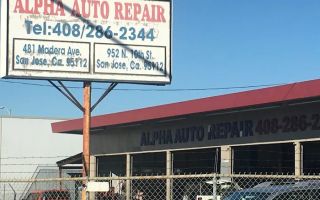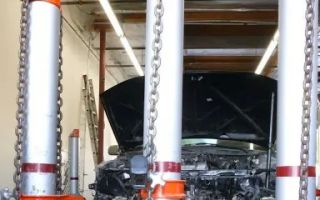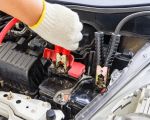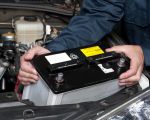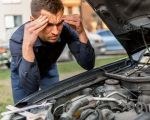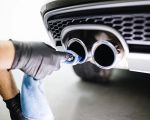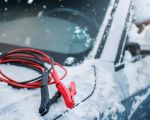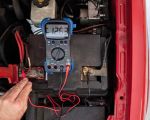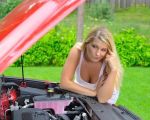How Do I Troubleshoot My Car After a Jumpstart?
1. Start with the Basics: Check for Obvious Issues
If your car doesn’t start after a jumpstart, the first step is to check for any obvious issues. Start by ensuring that the battery cables are securely connected. A loose connection can easily prevent the car from starting. Make sure the clamps are attached to the correct terminals: red to the positive (+) terminal, and black to the negative (-) terminal. A simple mistake here can make all the difference.
After making sure the connections are correct, check for any visible damage to the cables or battery. Look for frayed wires or corrosion around the battery terminals. Corrosion, often white and powdery, can hinder the flow of power to your car, even after a jumpstart. Cleaning the terminals with a battery terminal cleaner or a mixture of baking soda and water can often solve this issue.
A case I remember involved a customer who was stranded in the parking lot after a jumpstart failed. After checking the battery connections and cleaning the corrosion, the car started right up. Sometimes, troubleshooting just requires a keen eye and a little patience!
2. Is the Alternator Working Properly?
If the jumpstart doesn’t work, the problem could be with your alternator. The alternator charges the battery while the engine runs, and if it fails, your battery could be completely drained even after a successful jumpstart. To check if your alternator is working, start the car and look for any warning lights on your dashboard, particularly the battery warning light.
Another simple way to check the alternator is to use a multimeter. With the car running, check the battery voltage. A healthy alternator should show between 13.7 to 14.7 volts. If the voltage is lower, the alternator might not be charging the battery effectively, and you might need to consider having it replaced.
One of our customers recently had their car towed to our shop after repeated jumpstart failures. We discovered the alternator was faulty, which caused the battery to drain continuously. Replacing the alternator solved the issue, and the customer was back on the road in no time!
3. Check the Health of the Battery
After a jumpstart, if your car still refuses to start, your battery could be too far gone to hold a charge. Over time, batteries lose their ability to hold a charge, especially after several years of use. A dead or dying battery may not show signs of failure immediately, but it can quickly cause problems when trying to start your car, even after a jumpstart.
If you suspect the battery is the issue, take it to a mechanic or an auto parts store for a load test. This test will show whether the battery can still hold a charge or if it needs replacing. Many auto parts stores offer free battery testing, which could save you time and money in the long run.
On one occasion, a customer contacted us after their car wouldn’t start despite numerous jumpstarts. After inspecting the battery, we discovered it was completely drained and could no longer hold a charge. After installing a new battery, the car started instantly, and the customer was able to continue their day.
4. Don’t Forget to Check the Fuses
If the battery and alternator appear to be functioning correctly, the issue could lie with a blown fuse. The fuses protect your car’s electrical system by shutting off the power in the event of a surge or malfunction. A blown fuse could prevent your car from starting even after a jumpstart.
To check the fuses, locate the fuse box (usually under the dashboard or in the engine compartment) and inspect the fuses for any visible signs of damage. A blown fuse will often appear discolored or broken. Replacing a blown fuse with a new one of the same rating can sometimes solve the issue.
We’ve seen cases where customers have been stranded because a fuse blew during the jumpstart attempt. One customer needed an urgent tow to our facility after they realized their fuse had blown during the process. After replacing the fuse, their car started immediately, and they were back on the road.
5. When to Call for Professional Towing Assistance
If you've checked the battery, alternator, and fuses but your car still refuses to start, it may be time to call in the professionals. Sometimes, the issue is more complex and requires the expertise of a certified mechanic. At this point, it's best to get your car towed to a reputable service center or mechanic who can diagnose and repair the problem.
Our towing service has helped countless drivers in emergencies like this. One memorable instance was a customer whose car broke down in the middle of a busy intersection after a failed jumpstart attempt. We quickly dispatched a flatbed tow truck to transport their vehicle to our nearby service center. The issue turned out to be a faulty fuel pump, which was beyond a simple fix. With our reliable towing service, the customer was able to get the necessary repairs done and continue their journey.
If you find yourself in a situation where troubleshooting doesn’t resolve the issue, don’t hesitate to contact a professional towing service. Rescue & Towing is always here to provide fast, affordable, and reliable towing and roadside assistance services. We’re available 24/7 to help you out when you need it most. Visit Rescue & Towing to learn more about our services or to request assistance today!



